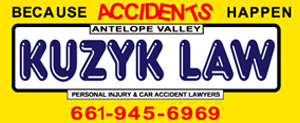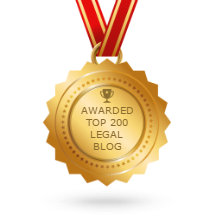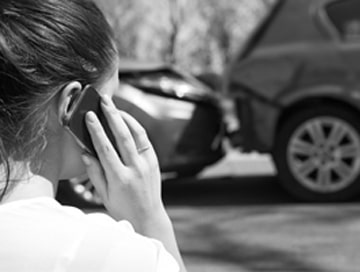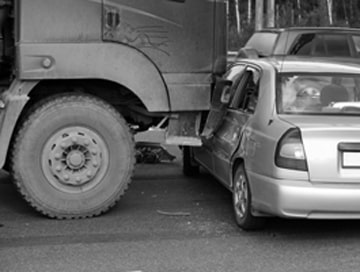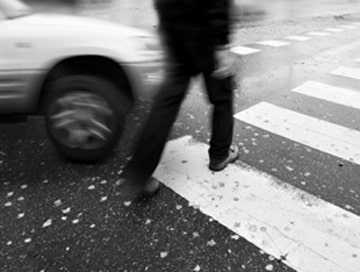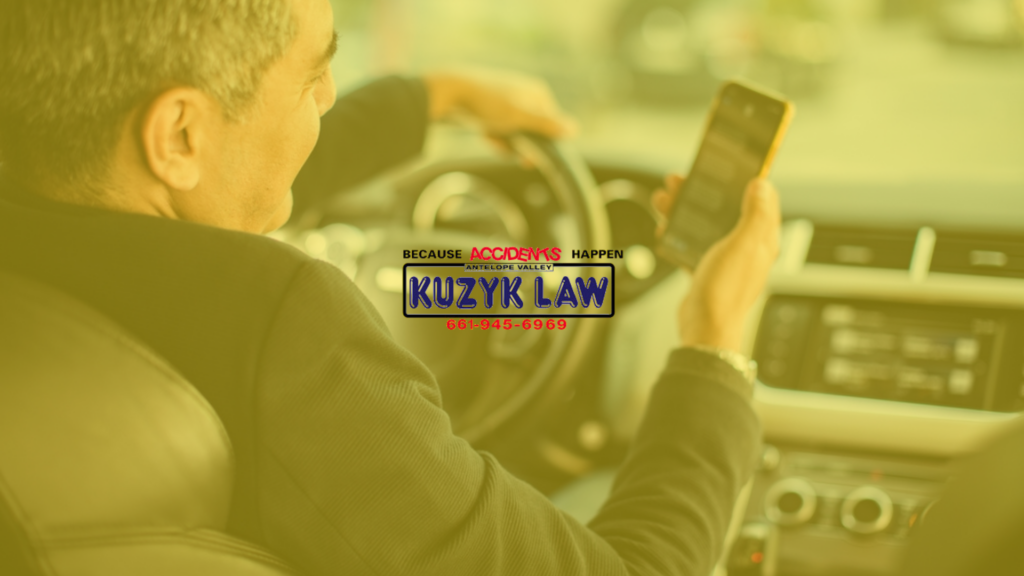
Distracted driving is a leading cause of car accidents in Lancaster, California, and throughout the state. Drivers need to be aware of three main types of distracted driving: manual, visual, and cognitive distractions. These distractions put everyone on the road at risk, from drivers and passengers to pedestrians and cyclists.
Understanding the types of distracted driving can help promote safer driving habits and reduce the likelihood of accidents caused by inattention.
In this blog post, we’ll explore the three types of distracted driving, their impact on driver safety, and how to minimize distractions behind the wheel.
What Are the Three Types of Distracted Driving?
Distracted driving is defined as any activity that takes attention away from driving. According to the California Highway Patrol, three primary categories of distraction can affect drivers:
1. Manual Distractions
Manual distractions involve taking your hands off the wheel. This distraction is common when drivers reach for something in the car, adjust their GPS, or eat while driving.
Even momentarily removing your hands from the steering wheel can significantly increase the risk of a collision. Manual distractions are hazardous because they reduce your ability to react quickly during a sudden stop or hazard.
2. Visual Distractions
Visual distractions occur when a driver looks away from the road. Common examples include reading a text message, looking at a GPS device, or turning to check on passengers in the back seat.
According to the California Office of Traffic Safety, looking away for even a few seconds can have devastating consequences, especially on highways with heavy traffic. Visual distractions prevent you from noticing changes in the road or traffic conditions.
3. Cognitive Distractions
Cognitive distractions involve taking your mind off driving. This can happen when you’re daydreaming, talking to passengers, or preoccupied with thoughts unrelated to driving.
Even though your hands are on the wheel and your eyes are on the road, cognitive distractions impair your reaction time and decision-making abilities.
Texting and driving is particularly dangerous because it often involves all three types of distraction—manual, visual, and cognitive.
Common Causes of Distracted Driving
While the types of distracted driving are clear, understanding what leads to these distractions is equally important. Here are some of the most common causes of distracted driving in Lancaster:
Texting and driving:
One of the leading causes of accidents, texting while driving distracts drivers in all three ways—manually, visually, and cognitively.
Eating or drinking:
Grabbing a bite or sipping on a drink while driving might seem harmless, but it requires taking at least one hand off the wheel.
Using in-car technologies:
GPS devices, touchscreens, and even radios can become sources of distraction when drivers focus on them instead of the road.
Passenger interactions:
Talking to or helping passengers in the back seat can divert both visual and cognitive attention away from driving.
Multitasking:
From grooming to adjusting the seatbelt, any activity that isn’t focused on driving increases the risk of distraction.
Why Distracted Driving is a Growing Problem
The prevalence of smartphones and other digital devices has made distracted driving a growing concern in California. In 2024, distracted driving laws have become stricter, but many drivers still underestimate the danger of multitasking.
Statistics from the California DMV indicate that distracted driving accounts for a significant percentage of car accidents each year. In particular, texting and driving is one of the most dangerous activities, as it involves all three types of distraction.
To combat the issue, local authorities in Lancaster are increasing enforcement of distracted driving laws and encouraging public education on the dangers. With increasing traffic on highways and roads, practicing driver safety and minimizing distractions is more important than ever.
Distracted Driving Phone Use by U.S. Survey Respondents
| Activity | Percentage of Respondents |
| Used cell phone | 77% |
| Used maps | 74% |
| Read texts/emails | 56% |
| Used social media | 27% |
| Did online shopping | 19% |
This table shows that many U.S. survey respondents admitted using their cell phones while driving in December 2022. The most common activity was using maps (74%), followed by reading texts/emails (56%).
A significant number of respondents also admitted to using social media (27%) and online shopping (19%) while driving.
Texting and Driving Facts: Why It’s So Dangerous
Texting while driving is one of the most dangerous activities you can engage in behind the wheel. Here’s why:
Visual distraction:
Taking your eyes off the road for five seconds at highway speeds means covering the length of a football field without looking.
Manual distraction:
Typing a message requires taking one or both hands off the wheel, reducing control of the vehicle.
Cognitive distraction:
Reading and composing messages diverts your mental focus away from the task of driving.
The combination of all three types of distraction makes texting and driving one of the leading causes of accidents on California highways. According to the National Highway Traffic Safety Administration, texting while driving increases the likelihood of a crash by 23 times compared to driving without distractions.
Legal Consequences of Distracted Driving in California
In California, distracted driving can lead to serious legal consequences, mainly if it results in an accident. California law prohibits using handheld electronic devices while driving, with penalties ranging from fines to points on your driving record.
More severe consequences, such as license suspension or criminal charges, may apply if distracted driving leads to injury or death.
If you are involved in an accident caused by a distracted driver, you can pursue compensation for your injuries.
A Lancaster distracted driving accident lawyer can help you navigate the legal process and secure the compensation you deserve for medical expenses, lost wages, and other damages.
At Kuzyk Personal Injury & Car Accidents Lawyers, our team represents victims of distracted driving accidents in Lancaster and beyond.
Is Texting and Driving Illegal?
Yes, texting and driving is illegal in California. Section 23123 CVC (California Vehicle Code) makes using a cell phone while driving an offense punishable by a fine, with a few exceptions.
When can you legally use your cell phone while driving?
The exceptions to the cell phone prohibition in the texting and driving laws include:
- If you are using the cell phone for emergency purposes, such as calling 911
- If you are an emergency services professional in an authorized emergency vehicle in the course of your duties
- If you are driving on private property
- If your cell phone is set up for voice-operated, hands-free communication and is mounted on the windshield, dashboard, or center console, and the device can be activated or deactivated with a single swipe or tap of the finger — and you are using the device in this manner.
The Cost of Texting and Driving
How much is a texting and driving ticket? The base fine is $20 if it is the first infraction and $50 for each subsequent infraction. However, court costs and penalty assessments on a cell phone ticket in California can bring the total amount to over $162 for the first infraction and over $285 for subsequent infractions.
Failing to appear for a traffic violation citation is a misdemeanor offense punishable by up to 6 months of incarceration in the county jail or a fine of up to $1,000. As such, there are better solutions than ignoring the ticket.
Preventing Distracted Driving: Tips for Safer Roads
To prevent distracted driving and ensure safer roads in Lancaster, here are some practical tips:
Put your phone away:
Turn off notifications or place your phone in the glove compartment while driving to eliminate the temptation to check it.
Use hands-free technology:
If you need to make a call, use Bluetooth or hands-free devices, but be mindful that even hands-free conversations can be cognitively distracting.
Plan your route before driving:
Set your GPS destination before driving to avoid adjusting it on the road.
Limit passenger distractions:
Ask passengers to assist with directions or handle non-driving tasks so you can keep your attention on the road.
Take breaks on long drives:
If you need to eat, drink, or check your phone, pull over to a safe area rather than multitasking behind the wheel.
What to Do After a Distracted Driving Accident in California
If you’ve been involved in a car accident caused by any of the types of distracted driving, it’s crucial to take immediate action to protect your rights and seek compensation for your injuries. Here’s a step-by-step guide:
1. Seek Medical Attention
Prioritize your health and seek medical attention promptly, even if your injuries don’t seem severe. Document your injuries, medical treatments, and any limitations they impose on your daily life.
2. Gather Evidence
Document the accident scene by taking photos of any damage to your vehicle and the other involved vehicles. Gather contact information from witnesses and note any details about the other driver’s behavior. File a police report to document the incident.
3. Contact Your Insurance Company
Inform your insurance company about the accident, providing as much detail as possible. Adhere to their guidelines for reporting an accident.
4. Consult with a Lawyer
An experienced car accident lawyer can help you understand your legal rights and guide you through the claims process. At Kuzyk Personal Injury & Car Accidents Lawyers, our dedicated attorneys specialize in distracted driving accidents and can provide personalized guidance.
5. Gather Medical Documentation
Obtain copies of all medical records related to your injuries, including doctor’s notes, test results, and treatment plans.
5 FAQs About Distracted Driving
1. What are the three types of distracted driving?
The Centers for Disease Control and Prevention (CDC) identifies three types of driving distractions:
- Visual: Taking your eyes off the road
- Manual: Taking your hands off the wheel
- Cognitive: Taking your mind off driving
2. What are some examples of distracted driving?
Common examples of distracted driving include:
- Texting or using a cell phone
- Eating or drinking
- Talking to passengers
- Applying makeup or grooming
- Adjusting the radio or GPS
- Looking at a map or directions
3. Is texting and driving illegal in California?
Yes, texting and driving is illegal in California. It is considered a moving violation and can result in fines, points on your license, and even jail time in some cases.
4. What are the consequences of distracted driving?
Distracted driving can lead to a variety of consequences, including:
- Car accidents
- Injuries or death
- Increased insurance premiums
- Loss of driving privileges
5. How can I prevent distracted driving?
Here are some tips to help you avoid distracted driving:
- Put your phone away and out of reach
- Plan your route ahead of time
- Ask a passenger to help with navigation or answer calls
- Take breaks as needed
- Focus on the road and drive defensively
Get Legal Help if You’ve Been Injured in a Distracted Driving Accident
If you or a loved one has been injured in any type of distracted driving accident, you don’t have to navigate the aftermath alone. At Kuzyk Personal Injury & Car Accidents Lawyers, our experienced attorneys are ready to help you fight for your deserved compensation. From handling insurance claims to pursuing legal action, our team will work tirelessly on your behalf. Visit our Lancaster distracted driving accident lawyer page to learn more about our services and how we can assist you, or contact us directly through our contact page to schedule a free consultation.
